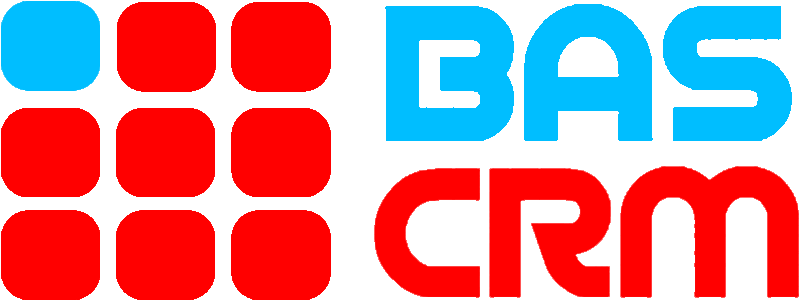Description

vtenext

ZoomInfo
Comprehensive Overview: vtenext vs ZoomInfo
vtenext
a) Primary Functions and Target Markets
vtenext is an open-source CRM software with a focus on business process management (BPM) integration. It offers a comprehensive suite of CRM tools, including sales force automation, marketing automation, customer service, and support functionalities. The software is designed to be highly customizable and is often used by small to medium-sized businesses that require adaptable solutions to manage customer relationships and automate business processes.
Target Markets:
- Small to Medium-sized Enterprises (SMEs)
- Businesses that require significant customization and integration capabilities
- Organizations looking for affordable CRM solutions with BPM capabilities
b) Market Share and User Base
Being an open-source solution, vtenext does not dominate the market but enjoys a niche following primarily among SMEs and open-source enthusiasts. Open-source CRM solutions typically have smaller market shares compared to proprietary solutions like Salesforce or Microsoft Dynamics 365. However, vtenext's flexibility and customization potential give it a loyal user base.
c) Key Differentiating Factors
- Open-source nature: Allows businesses to modify and customize the software to fit their unique needs.
- Integrated BPM functionality: The combination of CRM and BPM provides a competitive edge for businesses looking to streamline and automate complex processes.
- Cost-effectiveness: As an open-source product, vtenext offers a cost-effective alternative to expensive proprietary CRM solutions.
ZoomInfo
a) Primary Functions and Target Markets
ZoomInfo is a B2B contact and company database provider that offers a subscription-based service. It helps sales and marketing teams access comprehensive and up-to-date information on businesses and professionals. The platform provides features for lead generation, market research, and sales intelligence, enabling users to enhance their outreach and engagement strategies effectively.
Target Markets:
- Large enterprises and SMEs seeking robust B2B contact databases
- Sales and marketing teams focused on lead generation and expansion
- Organizations in sectors like technology, finance, real estate, and more that require detailed business intelligence
b) Market Share and User Base
ZoomInfo is one of the leading players in the B2B contact data market and boasts a significant market share. It is widely used across many industries and has a large user base due to its extensive data coverage and quality. The platform is popular among sales and marketing professionals looking to streamline their operations with accurate data.
c) Key Differentiating Factors
- Comprehensive B2B Data: ZoomInfo provides one of the largest databases of business contacts and companies, which is continuously updated.
- Advanced Data Analytics: Offers predictive analytics and proprietary algorithms to enhance data quality and usability.
- Integration Capabilities: Easily integrates with popular CRM and sales enablement tools, making it a versatile choice for diverse teams.
Comparison
Overall Market Share and User Base
- vtenext caters mostly to SMEs and open-source software enthusiasts, maintaining a modest but dedicated user base.
- ZoomInfo holds a significant market position in the B2B data sector, with a large user base among enterprises seeking data intelligence.
Key Differentiating Factors
- vtenext is distinguished by its open-source model and BPM integration, which is appealing for businesses needing customization and process automation at a lower cost.
- ZoomInfo stands out for its extensive and continuously updated B2B contact database, geared towards enhancing sales and marketing efforts with high-quality data.
Both products serve different primary functions and target different user needs, playing essential roles in their respective domains.
Contact Info

Year founded :
2011
Not Available
Not Available
Italy
http://www.linkedin.com/company/vte-crm

Year founded :
2000
+1 800-914-1220
Not Available
United States
http://www.linkedin.com/company/zoominfo
Feature Similarity Breakdown: vtenext, ZoomInfo
When comparing vtenext and ZoomInfo, it is essential to understand their primary functions and intended user bases as they serve different purposes. Vtenext is primarily a CRM platform focused on providing business process management (BPM) and customer relationship management solutions, while ZoomInfo is a business intelligence tool that provides comprehensive data on businesses and individuals for sales and marketing teams. Despite their different focal points, there are some features they share and distinct features that set them apart:
a) Core Features in Common:
- Contact Management: Both platforms offer robust contact management features to store and organize information about leads, customers, and business contacts.
- Data Integration: They integrate with other software and platforms to enhance data flow and operational efficiency. Both can typically connect with popular CRMs or other business solutions.
- Reporting and Analytics: Both vtenext and ZoomInfo offer analytics and reporting tools to help users gain insights from data, although the depth and focus of these reports differ based on their primary functions.
- Automation: Each platform provides some level of automation, though tailored to their offerings. Vtenext focuses on BPM automation, while ZoomInfo provides automation for data enrichment and updating contact information.
b) User Interfaces Comparison:
- vtenext: The user interface is designed with CRM and BPM functionalities in mind. It offers customizable dashboards and workflows, emphasizing process automation and customer management. The UI is structured around ease of managing customer relationships and internal processes efficiently.
- ZoomInfo: Designed more for data discovery and analysis, ZoomInfo’s interface provides users with access to a wide range of business data. It is typically organized to allow quick searches and data retrieval, with a focus on lead generation and business intelligence. The UI is geared towards sales and marketing professionals seeking quick access to company information.
c) Unique Features:
- vtenext Unique Features:
- Business Process Management (BPM): vtenext stands out with its BPM engine, allowing users to design and implement complex business processes within the CRM.
- Open Source Flexibility: Vtenext’s open-source model provides flexibility for developers to customize and extend the platform in ways that proprietary systems may not allow.
- Custom Workflow Automation: The platform allows for detailed customization of automated workflows, catering to specific business needs beyond just CRM functionalities.
- ZoomInfo Unique Features:
- Comprehensive Business Database: ZoomInfo has a vast database of business contacts and companies, providing detailed insights and intelligence for sales teams.
- Data Enrichment Tools: ZoomInfo offers sophisticated data enrichment services to enhance and update contact information automatically with new data.
- Intent Data: ZoomInfo provides intent data features, helping users identify potential leads based on their online behavior and interests.
In conclusion, while vtenext and ZoomInfo share some high-level features such as contact management and data integration, their core offerings and focus areas significantly differ. Vtenext is more suited for comprehensive CRM with BPM capabilities, while ZoomInfo excels in providing business intelligence and data enrichment for sales and marketing enhancements.
Features

Not Available

Not Available
Best Fit Use Cases: vtenext, ZoomInfo
vtenext
vtenext is a versatile CRM and BPM (Business Process Management) platform that integrates customer relationship management with workflow automation. It is particularly beneficial for:
a) Types of Businesses or Projects:
- Small to Medium Enterprises (SMEs): vtenext offers an affordable and scalable solution that can grow with the business.
- Manufacturing and Industrial Sectors: Businesses requiring complex workflow automation and process mapping can benefit from its BPM features.
- Service-Based Industries: Companies that need to track interactions and manage multiple service requests effectively.
- Customizable Workflow Needs: Businesses looking for a customizable system to adapt business processes and integrate seamlessly with other tools.
ZoomInfo
ZoomInfo is a comprehensive go-to-market intelligence platform that provides detailed information about companies and professionals. It is preferred in scenarios like:
b) Scenarios for Preferred Use:
- Sales and Marketing Teams: Organizations looking to enrich their lead generation and market research efforts.
- Recruitment Agencies/HR Departments: Finding detailed candidate or company information to streamline recruiting processes.
- Account-Based Marketing (ABM): Firms looking to target specific accounts with tailored strategies.
- Competitive Analysis: Businesses that need to gather competitive insights and intelligence for strategic planning.
Catering to Different Industry Verticals and Company Sizes
vtenext:
- Industry Verticals: Manufacturing, IT/Software, Professional Services, and Healthcare primarily benefit from vtenext's BPM features, enabling complex workflow automation.
- Company Sizes: Ideal for SMEs, but can be adapted for larger enterprises that require extensive customization and process management capabilities.
ZoomInfo:
- Industry Verticals: Technology, Finance, Recruitment, and Consulting industries make significant use of ZoomInfo's robust lead and data management services.
- Company Sizes: Serves a wide range from large enterprises to growing mid-sized firms due to its scalable data services and comprehensive market intelligence.
Each platform, while having some areas of overlap, primarily serves different business needs. vtenext is highly effective for companies seeking integrated CRM and workflow process management, making it suitable for industries requiring intricate process mapping. In contrast, ZoomInfo excels in providing actionable data for sales and marketing strategies, appealing to businesses keen on leveraging data for targeted engagements and growth.
Pricing

Pricing Not Available

Pricing Not Available
Metrics History
Metrics History
Comparing teamSize across companies
Conclusion & Final Verdict: vtenext vs ZoomInfo
When deciding between vtenext and ZoomInfo, it is important to consider various factors such as purpose, functionality, cost, ease of use, integration capabilities, and customer support. Both products serve different primary functions, which can significantly influence the decision depending on user needs.
a) Considering all factors, which product offers the best overall value?
Best Overall Value: Based on overall value, the decision will largely depend on the specific needs of the business. For CRM and business process management, vtenext might provide better value due to its CRM functionalities integrated with process management capabilities. Conversely, for sales intelligence and detailed data for lead generation, ZoomInfo offers exceptional value with its comprehensive database and robust insights.
b) Pros and Cons of Choosing Each Product
vtenext
Pros:
- Comprehensive CRM Features: Offers a wide range of CRM functionalities that can be tailored to support various business processes.
- Process Management: Integrates business process management (BPM) tools that allow users to design and automate workflows.
- Customization: High level of customization to fit specific business needs.
- Open Source Option: Offers an open-source version, providing flexibility and lower cost options.
Cons:
- Complexity: May have a steeper learning curve due to its BPM capabilities.
- Integration Limitations: Integration with third-party applications may be less seamless compared to industry-leading CRM tools.
ZoomInfo
Pros:
- Rich Database: Provides access to an extensive directory of business contacts and company information, crucial for lead generation and targeting.
- Data Accuracy: Regular updates to its database, contributing to high accuracy and reliability of information.
- Detailed Insights: Offers advanced tools for market insight and competitive analysis.
Cons:
- Cost: Could be more expensive, especially for small and medium-sized businesses.
- Privacy Concerns: Some users may have concerns regarding the sources and compilation of data.
c) Specific Recommendations for Users Trying to Decide between vtenext vs ZoomInfo
-
Identify Primary Needs: If your primary need is a robust CRM solution with capabilities for process management, vtenext might be the more suitable choice. Conversely, if your business focuses heavily on sales intelligence and requires detailed market data, ZoomInfo would likely provide better value.
-
Budget Considerations: Consider the cost implications of each tool, including the possibility of opting for vtenext's open-source version if budget constraints are a major concern.
-
Evaluate Integration Needs: Consider how each product will integrate with your existing systems. If seamless integration with various sales tools and platforms is critical, evaluate how each product supports these needs.
-
Trial and Demos: Take advantage of free trials or demos offered by each provider. This will give a practical sense of usability and functionality, helping to make an informed decision.
In conclusion, the "best" product largely depends on your company's specific requirements and budget. Evaluate each tool carefully against your business objectives and operational needs to determine which will deliver the most value in your context.
Add to compare
Add similar companies




